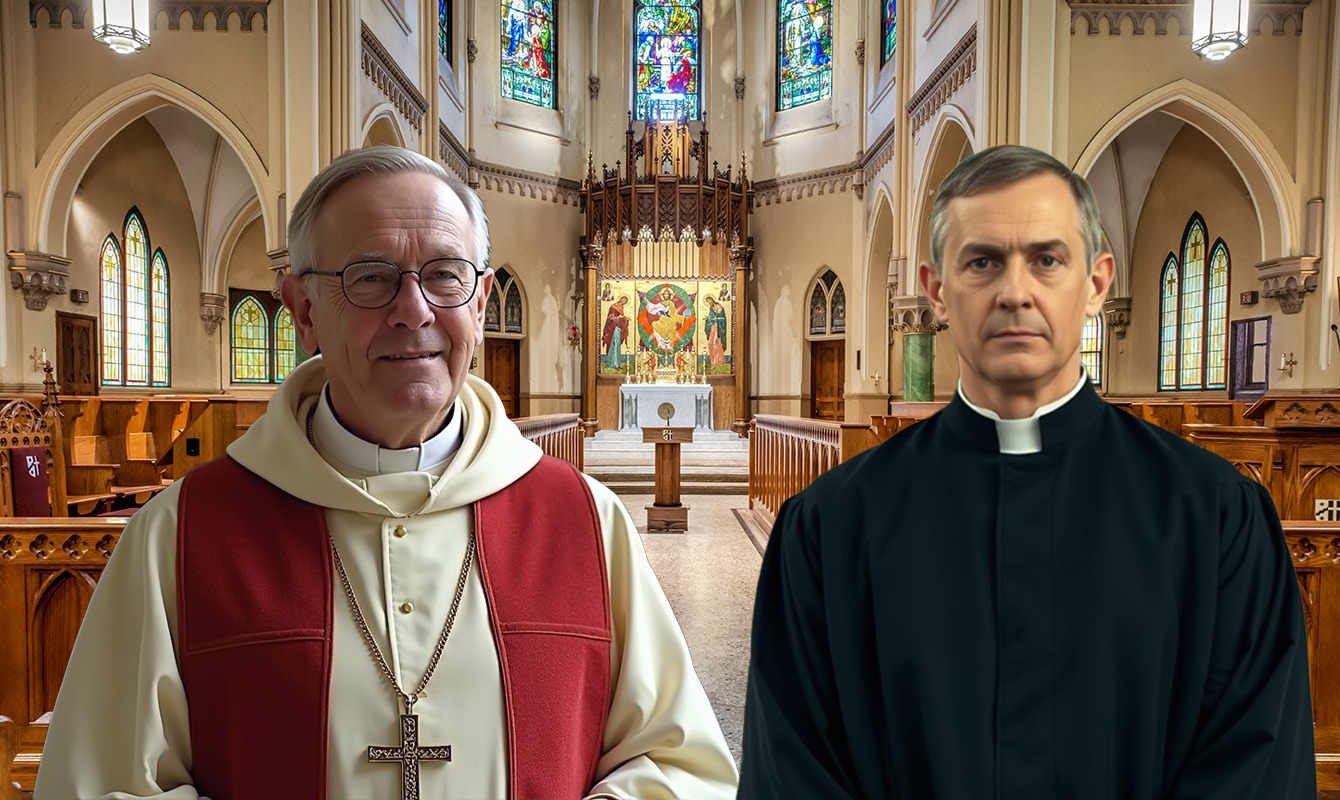No products in the cart.
Return To Shop
When we think of a Catholic priest, one of the first images that come to mind is often their Catholic Priest Clothes. These garments hold significant meaning in the context of their religious duties and symbolize the priest’s sacred role within the Church.
Catholic Priest Clothes is not just about tradition; it reflects the spiritual and sacred commitment the priest has made to the Church and God. In this blog, we will explore the meaning of Catholic priest clothing, the different types of attire, and the history behind the garments.
We will also provide insight into their various functions and how they reflect the priest’s vocation. Additionally, we’ll discuss how clergy wear is linked to identity and authority, providing a modern-day perspective on the importance of clothing the clergy.
Symbolism Behind the Catholic Priest Clothing
Catholic Priest Clothes plays an essential role in the life of the Church, symbolizing the priest’s dedication to God, his role in the faith community, and his commitment to serving the people of God. The clothes worn by priests are not just for practical purposes, they are steeped in tradition and carry deep spiritual meaning.
Let’s explore the meanings behind some of the most commonly worn items in Catholic priest clothing:
- Cassock: The cassock (also known as soutane) is a full-length garment typically worn by Catholic clergy, including priests. Traditionally black, the cassock symbolizes humility, purity, and the priest’s commitment to their vocation. The cassock marks the priest’s separation from secular life and signifies their devotion to God and the Church.
- Chasuble: Worn during Mass, the chasuble is a large, flowing garment that signifies the priest’s role as a mediator between God and the people. The color of the chasuble reflects the liturgical season (green for Ordinary Time, purple for Advent and Lent, white for Christmas and Easter, etc.), and its simplicity is a symbol of the priest’s service to Christ.
- Stole: The stole is a long, narrow strip of cloth worn over the shoulders of the priest, often during the administration of sacraments. It symbolizes the priest’s authority to minister and perform sacred rituals. The stole is worn during Mass and other sacramental services, marking the priest’s role as a representative of Christ.
- Cincture: The cincture is a rope-like belt worn around the waist, often with the cassock. It represents chastity and purity and reflects the priest’s vow of celibacy.
Overall, the attire worn by Catholic priests is a visual representation of their role as spiritual leaders and servants of the Church. Each garment holds symbolic meaning, helping both the priest and the congregation focus on the sacredness of the liturgy and the priest’s service to the Church.
Types of Catholic Priest Clothes
Catholic priest clothing can be categorized into various types based on occasion and function. Let’s break down the key garments commonly worn by priests:
- Everyday Clothing: These are the garments worn by priests in their daily routines, outside of liturgical functions. The cassock is the most common everyday garment worn by priests, serving as an expression of their identity and role as clergy. Some priests may also wear clerical shirts, which feature a black shirt with a white collar (often referred to as a clerical collar). This simple attire helps distinguish priests from the laity.
- Liturgical Clothing: These garments are worn during Mass or other religious services. Liturgical clothing includes the chasuble, stole, alb, and maniple. The alb is a long white garment worn underneath the chasuble, symbolizing the purity of Christ. The maniple, a liturgical vestment worn on the arm, is less common today but was once part of traditional Mass attire. The chasuble is worn over the alb and is the primary vestment during Mass, symbolizing the priest’s sacred role in the Eucharistic sacrifice.
- Sacramental Clothing: These garments are worn during the administration of sacraments such as baptism, communion, and confession. The stole is an essential part of sacramental clothing, symbolizing the priest’s authority to act in the person of Christ. It is worn during the administration of most sacraments, highlighting the sacred nature of the rituals.
Roman Catholic Clergy Apparel
Roman Catholic clergy apparel has evolved over the centuries, influenced by changing cultures and historical events. However, the core elements of clergy clothing have remained relatively consistent throughout history. The distinctiveness of clergy attire can be traced back to the early Christian Church, when priests and bishops adopted specific garments to set themselves apart from laypeople.
- The Early Days: In the early Christian period, clergy members wore simple tunics and robes that were not drastically different from the clothing of the general populace. However, as the Church became more organized, clergy members began to adopt distinct vestments to symbolize their special vocation.
- Medieval and Renaissance Influence: The Middle Ages saw the elaboration of clerical clothing, influenced by the growing wealth of the Church and the establishment of hierarchical structures. The chasuble, in particular, became more elaborate in design, often made of richly embroidered fabric, reflecting the grandeur of the liturgical celebrations. The Renaissance period further influenced the design of clergy apparel, with elaborate decorations and the use of luxurious materials.
- Modern Times: Today, Roman Catholic clergy apparel still reflects these historical traditions, but it has become more streamlined in certain cases. While some elements of the liturgical vestments are simpler, such as the modern cassock, the significance of each garment remains unchanged. Priests continue to wear distinctive attire that helps them maintain a posture of reverence and humility.
Clothing the Clergy: A Reflection of Vocation and Identity
The clothing worn by clergy is not just a way of covering the body; it is a profound expression of their vocation. Catholic priest clothing helps to define the priest’s identity, both within the Church and within society. By wearing the cassock, chasuble, and other sacred vestments, the priest acknowledges his special role as a servant of God and a representative of the Church. These garments mark the priest’s separation from the secular world and symbolize his dedication to a life of prayer, service, and sacrifice.
The concept of “clothing the clergy” goes beyond providing garments. It involves clothing them in a way that honors their sacred calling. The attire worn by clergy represents their spiritual identity and their commitment to serve not only the Church but the entire faith community. It also marks them as members of a special group, distinct in their spiritual vocation.
Visualizing the Sacred Garments
Sometimes, seeing Catholic priest clothing in pictures can help people better understand its significance. Catholic priest clothing pictures often feature priests in full vestments, conducting Mass or participating in sacraments. These images highlight the beauty and reverence associated with these garments, from the flowing chasuble to the simple but powerful cassock. Each piece of clothing is a reminder of the priest’s spiritual identity and his relationship with God and the faithful.
Conclusion
Catholic priest clothing is far more than just a uniform; it is a visual representation of centuries of tradition, devotion, and theological significance. From the humble cassock to the majestic chasuble, each garment serves to remind both the priest and the congregation of the priest’s sacred vocation. These garments help to preserve the priest’s identity as a servant of Christ, fostering unity and reverence within the Church.
As the Church moves forward, the importance of these garments remains unchanged. They continue to remind clergy members of their solemn duty to serve God and the people. If you require high-quality clergy attire, consider visiting Clergy Wear Shop, an online store offering a wide range of clergy garments. It ensures clergy members can find clothing that fits their sacred duties with dignity and reverence.
Frequently Asked Questions (FAQs)
What does the cassock symbolize?
The cassock symbolizes humility, purity, and the priest’s commitment to their vocation. It is also a sign of their separation from secular life and devotion to the Church.
Why do priests wear different types of clothing during Mass?
Priests wear different clothing during Mass to signify their role in the liturgy. Each garment, like the chasuble or stole, has symbolic meaning, representing different aspects of the priest’s duties.
What are the names of the different garments worn by Catholic priests?
The Catholic Priest Clothes worn by Catholic priests include the cassock, chasuble, stole, alb, and cincture. Each piece has a specific purpose in the priest’s ministry.
Is there a difference between the clothing worn by priests and bishops?
Yes, bishops and cardinals wear more elaborate versions of liturgical clothing, such as the mitre and zucchetto. These garments reflect their higher rank within the Church.
Can the general public purchase Catholic Priest Clothes?
Some items of Catholic priest clothing, such as cassocks and clerical shirts, are available for purchase by the public. However, more specialized vestments, such as those worn during Mass, are typically reserved for clergy members.








Recent Comments